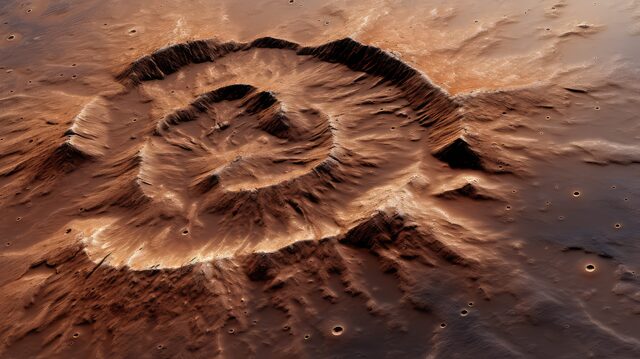Geologic features resembling spiders, created by sublimating carbon dioxide ice, were recently documented in the Martian region known as Inca City
The European Space Agency’s Mars Express has unveiled intriguing geological formations that resemble spider shapes in a Martian region known as Inca City, providing new insights into the seasonal changes on Mars and the dynamic processes at play. These dark, spider-like patterns are not signs of life but are instead caused by the sublimation of carbon dioxide ice.
As Mars transitions into the spring season in its Southern Hemisphere, the warming temperatures cause layers of carbon dioxide ice to transform directly from solid to gas. This sublimation process generates channels through which the gas escapes, carrying with it Martian dust that darkens the ice and creates distinct spider-like appearances. These formations range in size from 45 meters to nearly 1 kilometre across, dotting the landscape of Mars’s southern polar regions, including areas known as Inca City or Angustus Labyrinthus.
Embed from Getty ImagesThe high-resolution images captured by the Mars Express’s Stereo Camera offer a closer look at a variety of Martian features, from wind-sculpted ridges and grooves to sinkholes on the flanks of massive volcanoes, tectonic faults, ancient river channels, and lava pools. This broad array of geographical features captured in the images highlights the complex geological history of Mars and provides valuable data for ongoing scientific studies.
The presence of carbon dioxide and the detection of organic compounds by other Mars missions suggest potential for life at some level, as carbon is a fundamental element for life on Earth. It forms large, complex molecules easily with other common elements, raising intriguing possibilities about the conditions on Mars.
Although the formations are purely geological, the term “spider” captures the imagination and underscores the fascinating processes occurring on the Martian surface. This discovery adds to our understanding of Mars’ climatic and geological dynamics and continues to fuel scientific inquiry into the potential habitability of the Red Planet.

